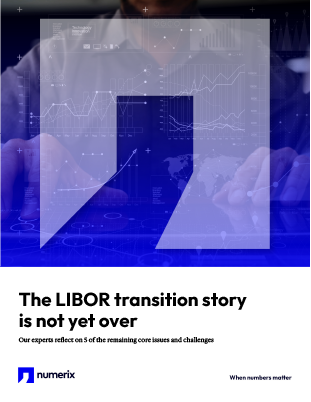
The LIBOR Transition Story Is Not Yet Over: Our Experts Reflect on 5 of the Remaining Core Issues and Challenges
At the end of 2021, the LIBOR rates of major markets were successfully retired without any turmoil. Considering LIBOR’s dominant role as an interest rate benchmark since the 1980s, the fact that there were only minor market disruptions around that transition from LIBOR speaks volumes about the adaptability and innovation that can take place in the world’s financial systems.
However, the LIBOR transition journey is not fully complete. There are five remaining U.S. dollar LIBOR rates that are scheduled to cease publication at the end of June 2023. This final phase of the transition from LIBOR will be significantly more impactful than the previous one, affecting hundreds of trillions of dollars in contracts and affecting participants all over the world. This means there are serious issues to be addressed and challenges to overcome.
In this white paper, two Numerix experts share what they believe are some of the most significant themes and concerns that exist as firms forge ahead with their transition plans, including:
- Model validation without historical SOFR market data
- The restrictions on Term SOFR
- The need for SOFR volatility data
- Demand for credit-sensitive alternative rates
- Risk and operational issues


